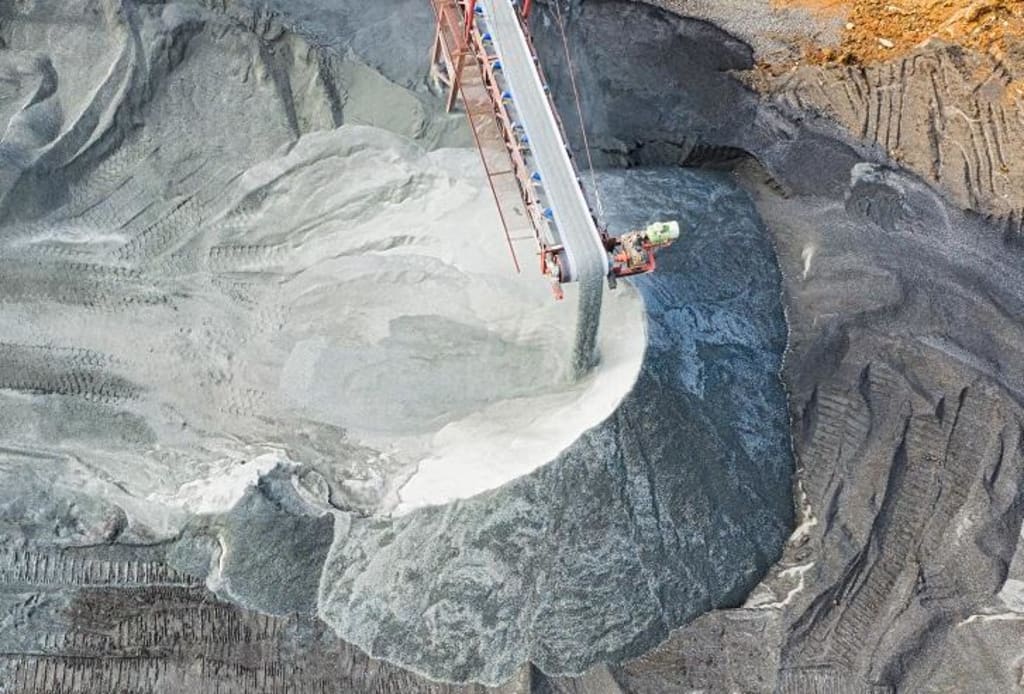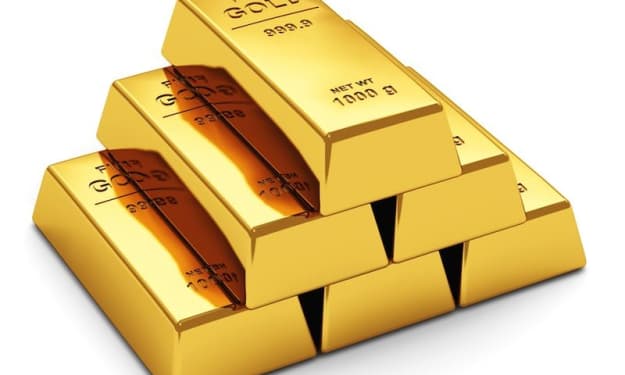Content warning
This story may contain sensitive material or discuss topics that some readers may find distressing. Reader discretion is advised. The views and opinions expressed in this story are those of the author and do not necessarily reflect the official policy or position of Vocal.
RISKIEST JOBS
The Riskiest Jobs In the World That Mine Sulfur, Salt and Coal

Mining is an essential industry that extracts valuable resources from the Earth to meet various societal needs. However, certain mining operations involve high-risk environments and hazardous conditions, making them some of the riskiest jobs in the world. This is particularly true for miners working in sulfur, salt, and coal mines. In this explanation, we will explore the challenges and risks associated with these mining operations in more detail.
1. Sulfur Mining:
Sulfur mining involves extracting sulfur, a yellow mineral that is used in various industries, including the production of fertilizers, chemicals, and rubber. The mining process often takes place in volcanic regions or near geothermal areas where sulfur is found in abundance. Here are some of the risks and challenges associated with sulfur mining:
a) Toxic and Hazardous Environment:
Sulfur mines present a highly toxic and hazardous environment for miners. Sulfur dioxide (SO2) gas, a byproduct of sulfur, can be released during the mining process and pose significant health risks, including respiratory problems and eye irritation. Miners must wear appropriate personal protective equipment (PPE) to mitigate these risks.
b) Extreme Temperatures:
Sulfur mines are often located in volcanic regions characterized by extreme temperatures. Miners have to endure hot and uncomfortable working conditions, with temperatures reaching well above 100 degrees Fahrenheit (38 degrees Celsius). Heat-related illnesses such as heat exhaustion and heatstroke are common risks for miners in these environments.
c) Physical Hazards:
Mining sulfur involves physical labor and heavy machinery. Miners may face the risk of injuries from falling rocks, collapsing tunnels, and accidents with machinery. Proper safety protocols and training are necessary to mitigate these risks.
d) Environmental Impact:
Sulfur mining can have a significant impact on the environment. The extraction process can lead to deforestation, soil erosion, and water pollution. Responsible mining practices and environmental regulations are crucial to minimize these adverse effects.
2. Salt Mining:
Salt mining involves the extraction of salt deposits from underground mines or through the evaporation of saltwater. Salt is used in various industries, including food processing, water treatment, and chemical manufacturing. Here are some of the risks and challenges associated with salt mining:
a) Structural Stability:
Salt mines often have extensive underground networks of tunnels and chambers. Maintaining the structural stability of these mines is crucial to prevent collapses and ensure the safety of miners. Regular inspections, ground support systems, and engineering expertise are required to mitigate these risks.
b) Respiratory Health Hazards:
During the mining process, fine salt particles can become airborne and pose respiratory hazards for miners. Prolonged exposure to high concentrations of salt dust can lead to respiratory conditions such as silicosis. Effective ventilation systems and respiratory protection measures are necessary to protect miners' health.
c) Machinery and Equipment:
Salt mining operations involve the use of heavy machinery and equipment, including drilling rigs, loaders, and conveyors. Accidents related to machinery malfunction, improper use, or inadequate maintenance can occur. Strict adherence to safety protocols, proper training, and regular equipment inspections are essential to minimize these risks.
d) Flooding and Water Hazards:
Some salt mines are located near coastal areas or underground reservoirs, increasing the risk of flooding. Miners must be prepared for water ingress and have effective dewatering systems in place to prevent flooding accidents.
3. Coal Mining:
Coal mining involves extracting coal deposits from underground or open-pit mines. Coal is a vital energy resource used for electricity generation and industrial processes. However, coal mining poses significant risks and challenges for miners:
a) Underground Hazards:
Underground coal mining presents numerous hazards, including roof collapses, gas explosions, and coal dust explosions. Methane gas, which is released during coal mining, can accumulate in underground areas and ignite when exposed to a spark or flame. Stringent safety measures, ventilation systems, and methane monitoring are critical to ensuring miner safety.
b) Respiratory Health Risks:
Coal dust is a primary respiratory hazard for miners. Prolonged exposure to coal dust can lead to black lung disease (pneumoconiosis) and other respiratory conditions. Miners must wear respiratory protection and employers should implement dust control measures to minimize the risk.
c) Physical Strain and Injuries:
Coal mining involves physically demanding tasks, including manual labor, heavy lifting, and operating machinery. Miners are at risk of musculoskeletal injuries, strains, and accidents caused by equipment failures. Proper training, ergonomic practices, and safety protocols are essential to mitigate these risks.
d) Environmental Impact:
Coal mining can have severe environmental consequences, including land degradation, water pollution, and greenhouse gas emissions. Responsible mining practices, land reclamation efforts, and the adoption of cleaner technologies are essential to mitigate these environmental impacts.
In conclusion, sulfur, salt, and coal mining are among the riskiest jobs in the world due to the toxic and hazardous environments, extreme temperatures, physical hazards, and health risks involved. Miners in these industries face unique challenges that require strict adherence to safety protocols, proper training, advanced technology, and effective risk mitigation strategies to ensure their well-being and the sustainability of mining operations.
About the Creator
Enjoyed the story? Support the Creator.
Subscribe for free to receive all their stories in your feed. You could also pledge your support or give them a one-off tip, letting them know you appreciate their work.






Comments
There are no comments for this story
Be the first to respond and start the conversation.